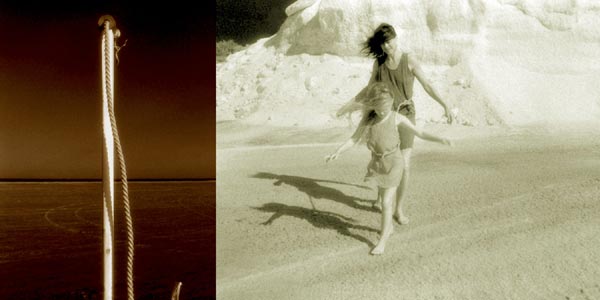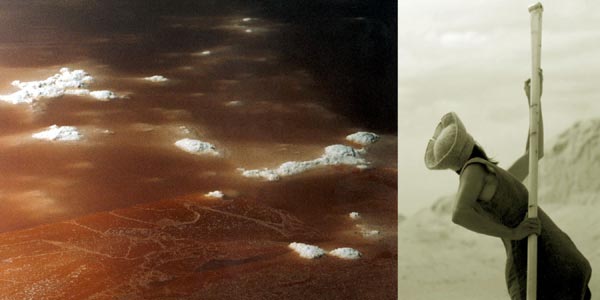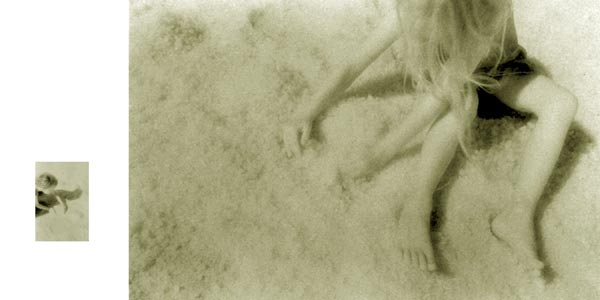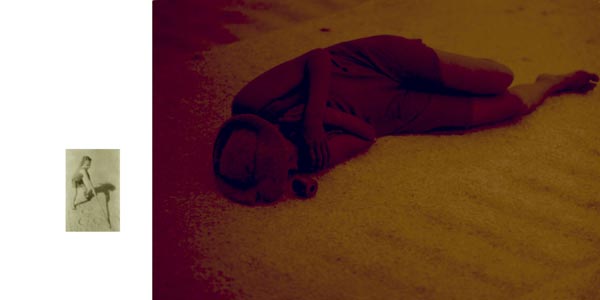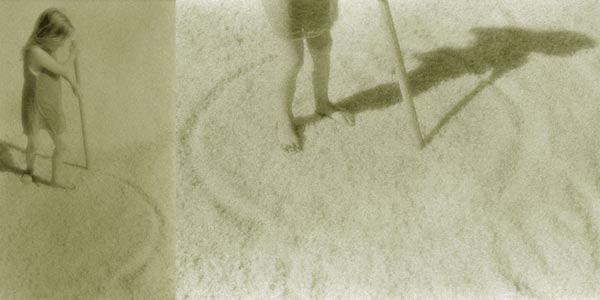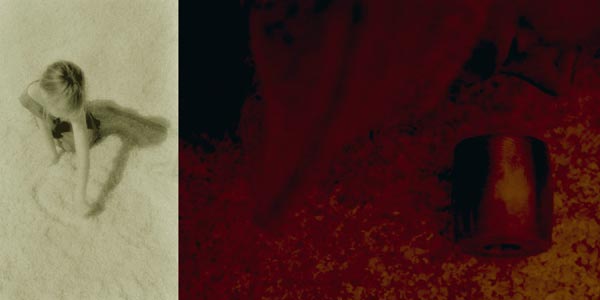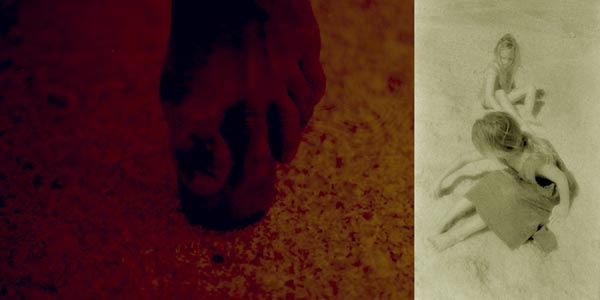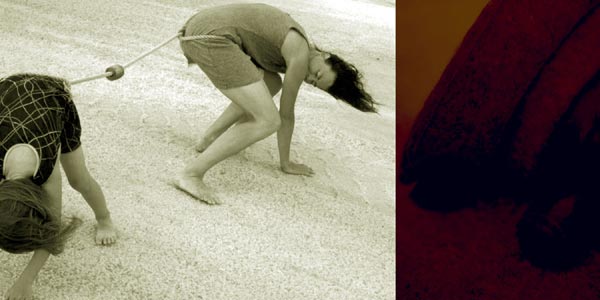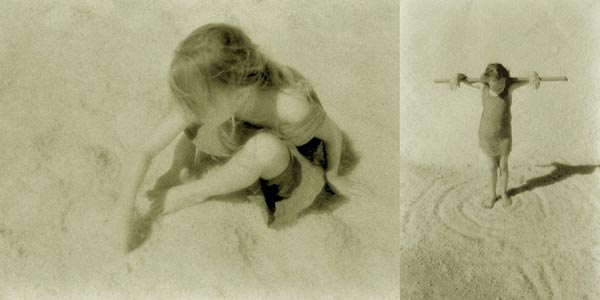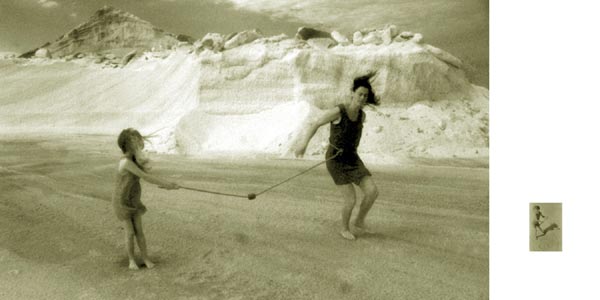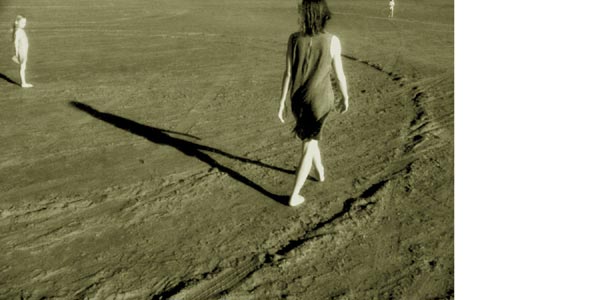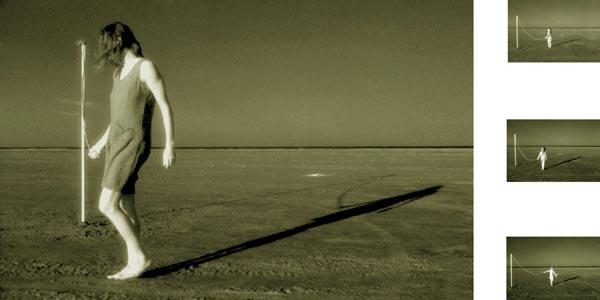Saltworks - Infrared Notes from a Pilgrimage
 They are moving among the salty foam on a beach which seems as deserted as it is endless. A rope, a metal ring, and a long wooden stick are the only properties that the woman and the girl are using. Who they are and what they are doing is not evident. They never meet the spectator's gaze; they are totally absorbed by what they are doing. It's like an archaic or primeval scene, from a moment when time might have existed but lacked importance.
They are moving among the salty foam on a beach which seems as deserted as it is endless. A rope, a metal ring, and a long wooden stick are the only properties that the woman and the girl are using. Who they are and what they are doing is not evident. They never meet the spectator's gaze; they are totally absorbed by what they are doing. It's like an archaic or primeval scene, from a moment when time might have existed but lacked importance.
For some reason they make me think of the remarkable lines in The Odyssey, XXIII where Odysseus recounts a prophecy about his own future and his death. He is to wander from town to town with an oar on his shoulder and come to a people who have never seen the sea and do not know to prepare food with salt. When another wayfarer says Odysseus is carrying a winnowing fan, he is to fix his oar into the earth and offer sacrifices to the gods. He is to live a long life after that and die peacefully, far from the sea.
I have never understood these lines (has anybody?), But I remember them more clearly because of that. In the same way I am fascinated by the photographic series "Saltworks-Infrared Notes from a Pilgrimage" by Danish artist Linda Orloff. Linda Orloff has gestured toward a kind of archetypal scenes also in previous works, where the markedly reductive approach of the pictures sets the tone rather than opening up a story. In these new photographs a girl and a young woman act as if they somehow where identical, as if the one could be exchanged for the other. Their movements are playful, but with an introverted seriousness. The pictures are long and narrow, which emphasizes the flat, horisontal landscape. There is an archaic, shadowy touch about the actors. Their movements seem to be detached, independent of our temporal context.
About Linda Orloff
Linda Orloff's works have a distinctive character; her imagery is stylized and meditative. With her new series of pictures she moves on within a unified set of motifs, which is largely centred on the human being as a sign in the landscape.
Pontus Kyander
Art critic and editor of SVT's Bildjournalen (Swedish National Televison)
Translated by Professor Gunilla Florby

